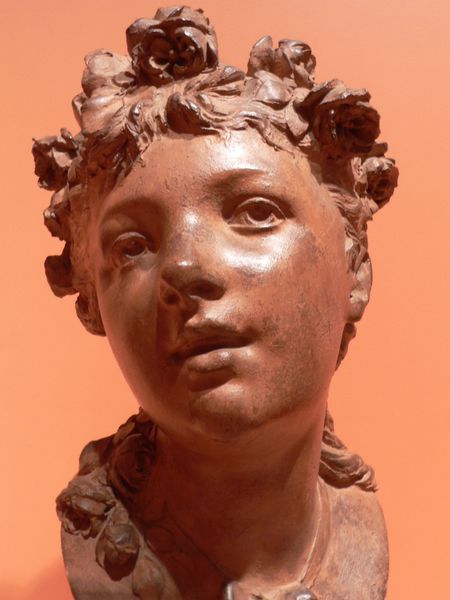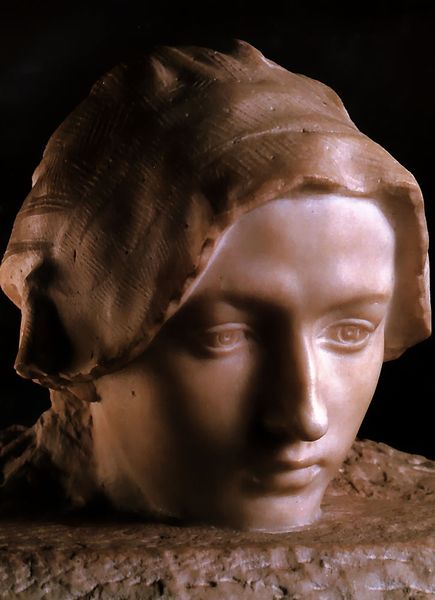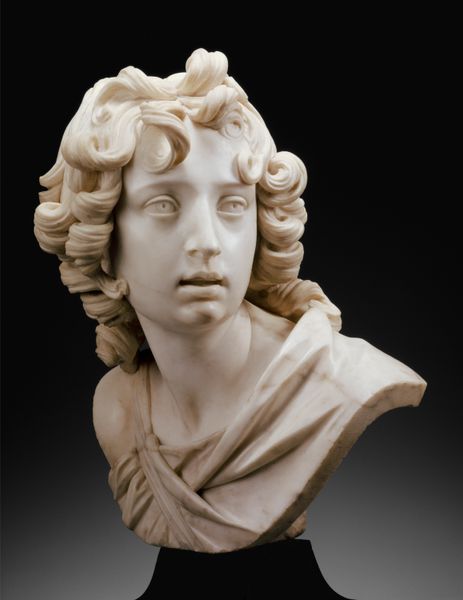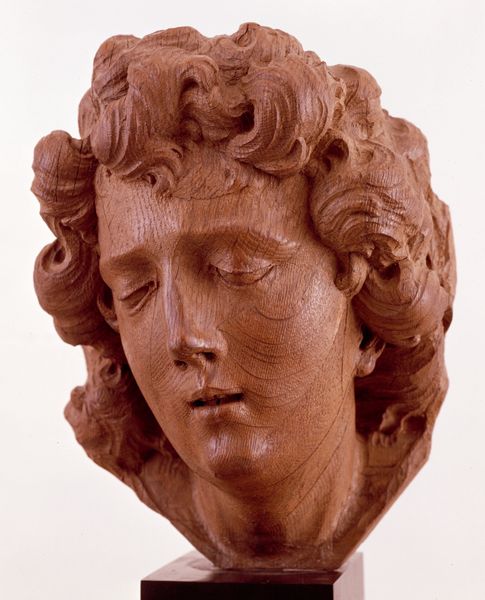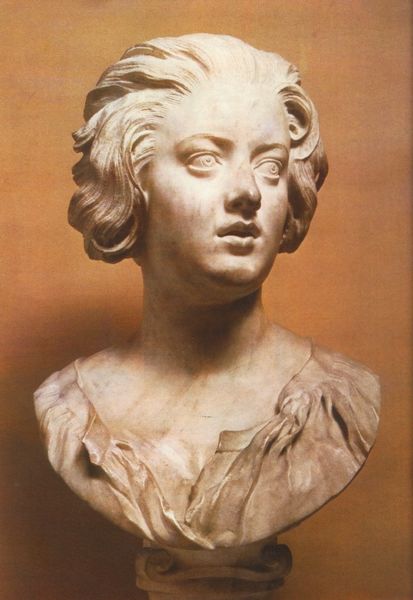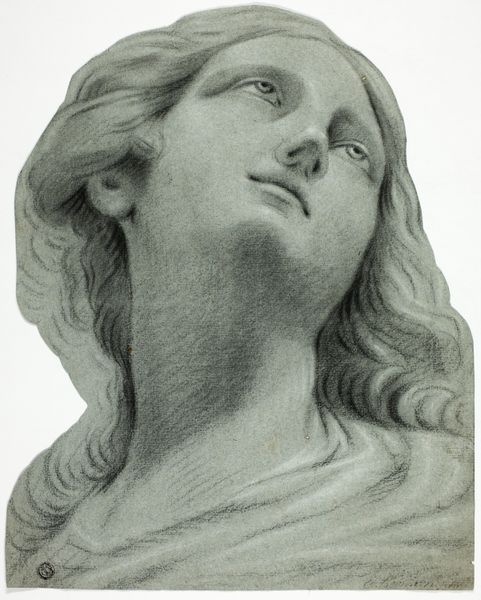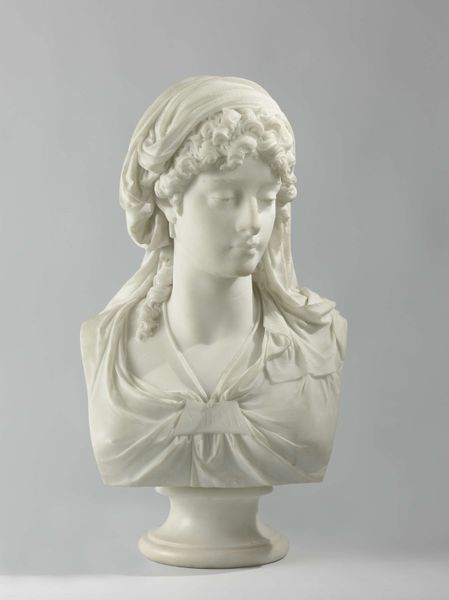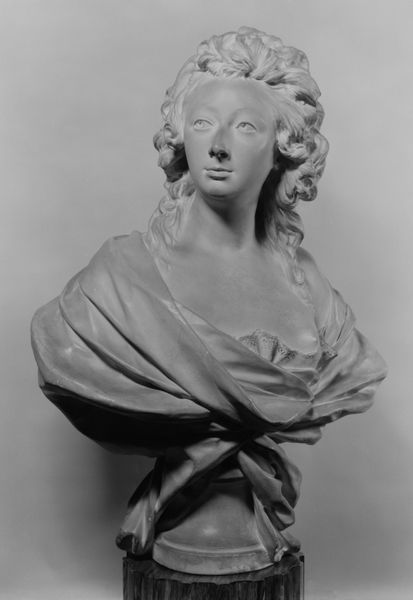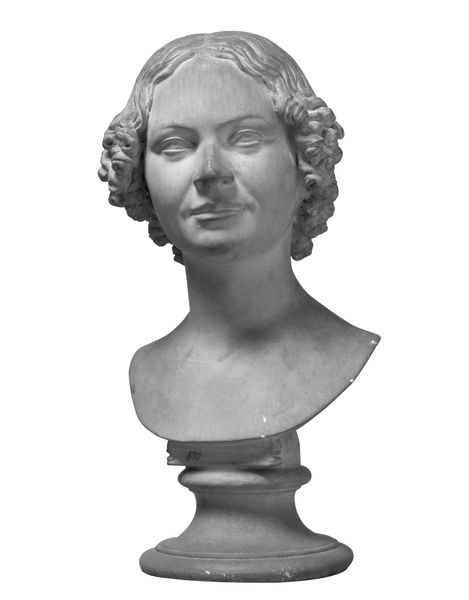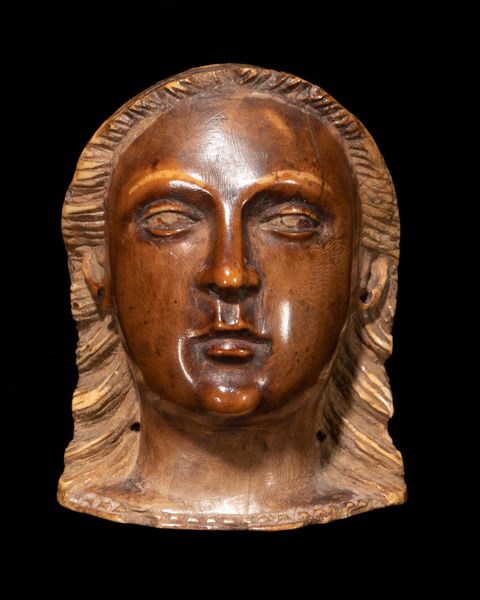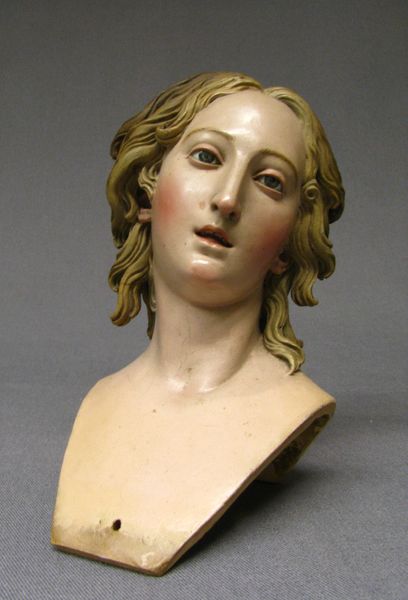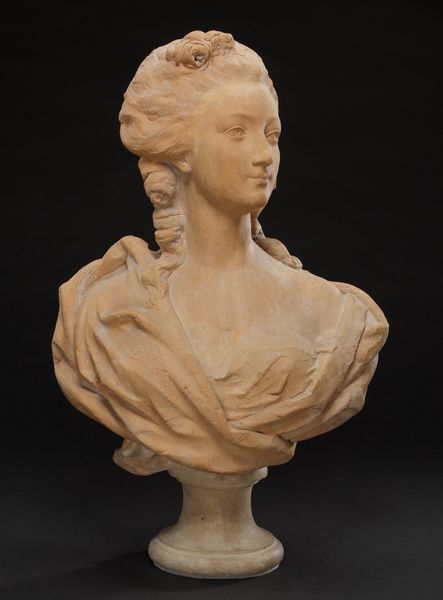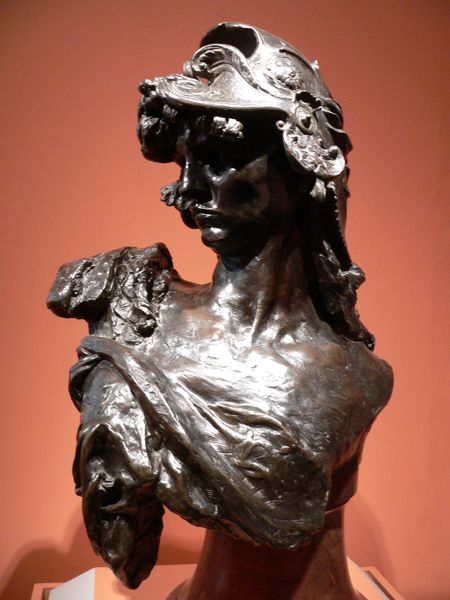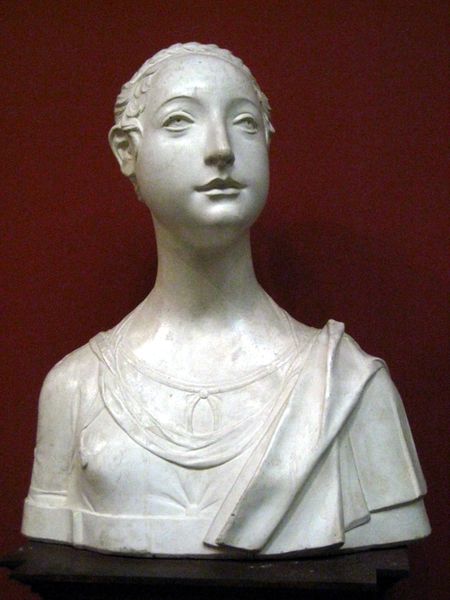
Copyright: Public domain
Editor: Here we have "Suzon," a bronze sculpture by Auguste Rodin, made in 1875. The smoothness of the bronze gives her this almost ethereal quality, yet her gaze feels direct, almost challenging. What do you see in this piece, looking at it through a critical lens? Curator: "Suzon" is an intriguing work precisely because of that tension you’ve identified. It reflects Rodin’s break from academic tradition while remaining firmly planted within it. Think about the 19th-century salon and its emphasis on ideal beauty. Do you see echoes of that here? How might it be subverted? Editor: I guess in the details. Her expression isn’t necessarily serene; there's a hint of defiance, perhaps? And the bronze, while smooth, isn’t perfectly polished. It’s not the flawless beauty celebrated in Neoclassical sculpture. Curator: Exactly! And that "imperfection" is where the politics emerge. Rodin is engaging with—and challenging—prevailing notions of femininity and representation. By imbuing Suzon with a sense of inner life, of agency, he's moving away from the objectification inherent in the male gaze that dominated the art world. Who do you think Suzon could be representative of? What does the title imply about Rodin’s focus on women and class in the late 19th century? Editor: I never thought about that angle. She doesn’t strike you as a noble figure. The way you place Rodin within social conversations happening at the time, allows for richer and deeper reflection on not just this statue but society as a whole. Thank you! Curator: Precisely! Considering artwork from a diversity of viewpoints opens so many more ways to connect.
Comments
No comments
Be the first to comment and join the conversation on the ultimate creative platform.
